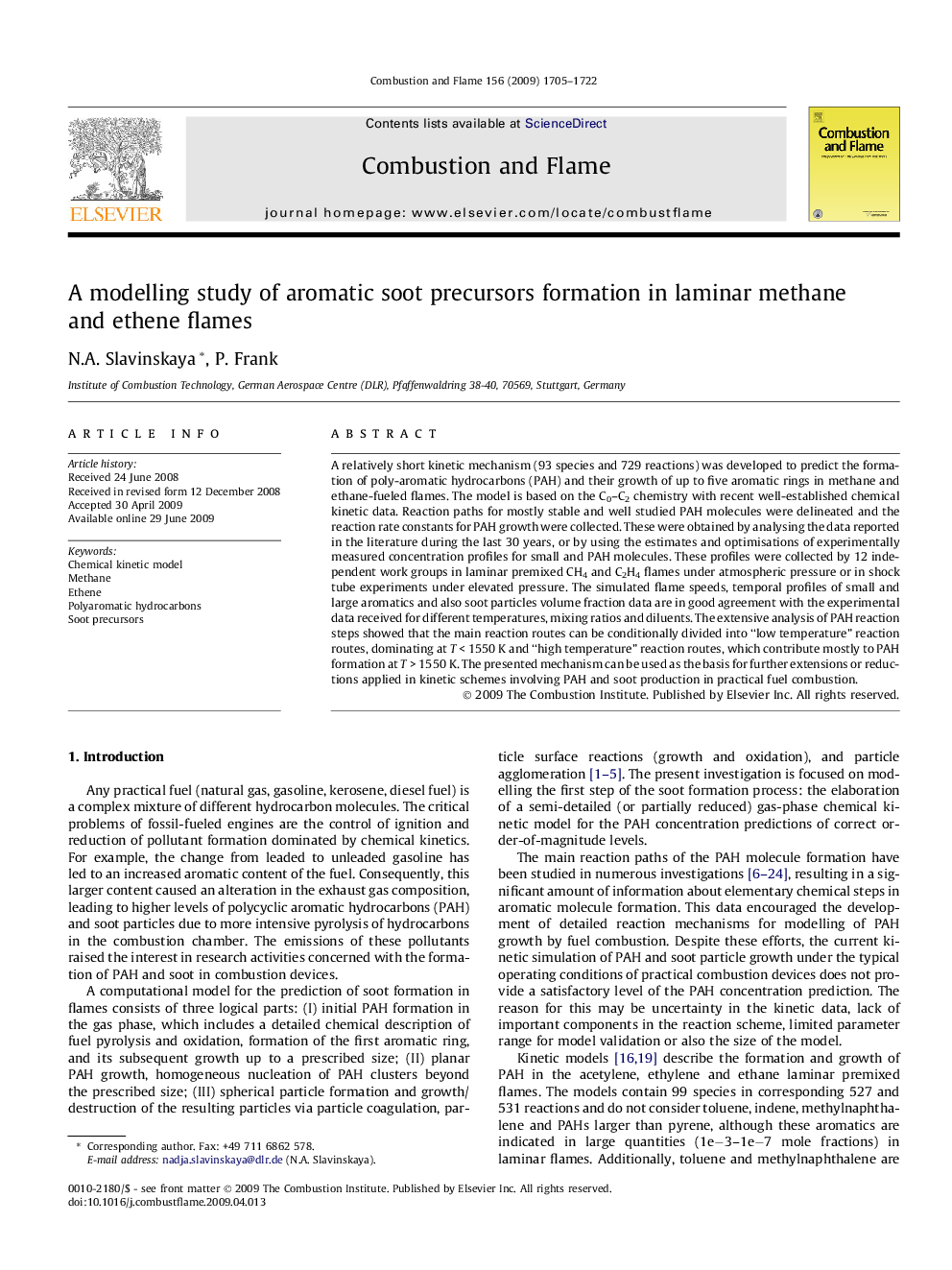| Article ID | Journal | Published Year | Pages | File Type |
|---|---|---|---|---|
| 166833 | Combustion and Flame | 2009 | 18 Pages |
A relatively short kinetic mechanism (93 species and 729 reactions) was developed to predict the formation of poly-aromatic hydrocarbons (PAH) and their growth of up to five aromatic rings in methane and ethane-fueled flames. The model is based on the C0–C2 chemistry with recent well-established chemical kinetic data. Reaction paths for mostly stable and well studied PAH molecules were delineated and the reaction rate constants for PAH growth were collected. These were obtained by analysing the data reported in the literature during the last 30 years, or by using the estimates and optimisations of experimentally measured concentration profiles for small and PAH molecules. These profiles were collected by 12 independent work groups in laminar premixed CH4 and C2H4 flames under atmospheric pressure or in shock tube experiments under elevated pressure. The simulated flame speeds, temporal profiles of small and large aromatics and also soot particles volume fraction data are in good agreement with the experimental data received for different temperatures, mixing ratios and diluents. The extensive analysis of PAH reaction steps showed that the main reaction routes can be conditionally divided into “low temperature” reaction routes, dominating at T < 1550 K and “high temperature” reaction routes, which contribute mostly to PAH formation at T > 1550 K. The presented mechanism can be used as the basis for further extensions or reductions applied in kinetic schemes involving PAH and soot production in practical fuel combustion.
